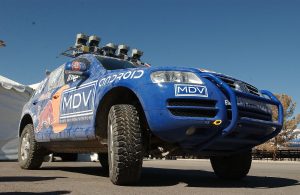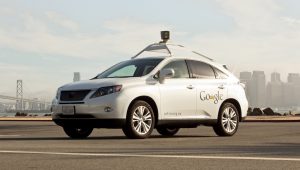This is the third installment in what I plan on making an occasional feature on this blog. The effect of automation for both good and bad in our society. As I’ve mentioned in the first two installments I am not anti-automation, far from it. However, I am greatly concerned about the lack of preparation on the part of our government and other civic leaders, indeed on a lack of understanding of the enormous changes to society that are now just beginning.
In this post I’m going to concentrate on how the introduction of the driverless car is going to effect all of our lives. First a little history.
In 2004 the Defense Advanced Research Projects Agency (DARPA) hosted the first ever challenge for autonomous vehicles, driverless cars. Fifteen teams competed in a race across 210 kilometers of desert in Nevada. Less than half the vehicles made it further than a kilometer or so and the “winner’, developed by a team from Carnegie Mellon University in Pittsburg, only succeeded in going 12 kilometers before failing. Based on these results many people thought driverless cars were decades away!
Only a year later, at the second DARPA challenge a vehicle designed and developed at Stanford University became the first robot to drive more than 100 kilometers as it completed the 210 kilometer course in under 7 hours without any human guidance! Four other robots also completed the course, although not as quickly. Two of the vehicles were from Carnegie Mellon, one a close second to Stanford. The driverless car was now a reality. The picture below shows the winning robot.

Now there was still a lot of work to be accomplished. The course set by DARPA had obstacles and difficult driving but there were no pedestrians or bicyclists, no traffic lights or stop signs. However in the past ten years those technical problems have been largely overcome and the remaining challenges are primarily legal ones.
Several states or countries have now begun to allow driverless cars on their roads. In 2011 Nevada passed legislation allowing testing to take place as did the United Kingdom in 2013. At this time the autonomous vehicle must still have a human being in the driver seat ready to take control if there’s a problem but as driverless cars continue to show themselves to be safer due to the elimination of human error and distraction this restriction will soon be lifted.
The advantages of driverless cars are many, and not just a reduction in sometimes deadly, human related collisions. Because driverless cars can communicate continuously with each other the gap between cars can be greatly reduced even while increasing speed. The ability of local authorities to manage traffic flow would also increase dramatically. Researchers at Columbia University have estimated that these improvements would increase the number of cars our present road system could handle by 275%, virtually eliminating traffic jams. These improvements on our nation’s highways will also help to reduce the costs of road construction and repair, of auto repair and insurance, think about that! The picture below shows Google’s driverless car which is already on the streets of many American cities.

Of course there are disadvantages as well and one of the biggest is going to the loss of jobs for people make their living driving, the cabbies, bus and truck drivers. I think the long haul truckers will be first to feel the impact but it won’t belong before the entire transportation industry is changed beyond all recognition. Within 30 years it is very likely that there will be no such things as cab, bus or truck drivers.
Of course this is an old story. Advances in industrialization, mechanization and now automation have made the lives of human beings enormously richer, healthier and even longer but it has also destroyed the lives of those who could not adapt quickly enough to the change. Our government officials need to become aware of this looming problem, not just here in the US but throughout the developed world.
